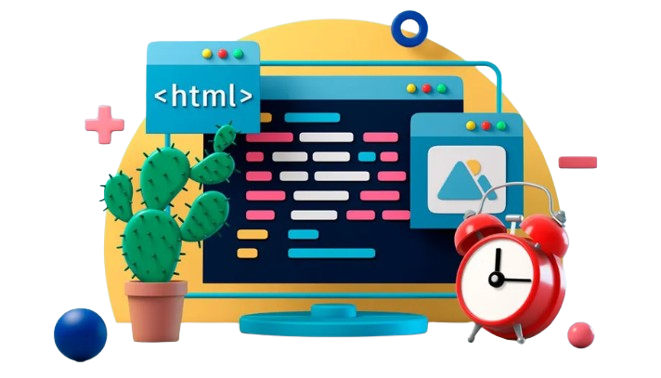In the world of web development, HTML is the backbone of every website you browse. Whether you're building a personal portfolio, a business landing page, or a dynamic web app, HTML (HyperText Markup Language) is the first building block in your development journey. Understanding its role is essential for any aspiring front-end developer aiming to create clean, accessible, and effective websites.
What is HTML and Why is it Fundamental? - 🧩
HTML is not just a tool; it is the core language that structures the web. It defines the elements on a webpage—from headers, paragraphs, and images to videos, forms, and tables. Every time you access a webpage, your browser reads the HTML document to determine how the content should be displayed.
Unlike programming languages that define logic and behavior (like JavaScript), HTML's role is to structure content in a meaningful, readable, and accessible way. Think of it as the skeleton of a webpage—defining what elements exist and how they are arranged before any design or interactivity is applied.
HTML’s Critical Role in Front-End Development
1. Content Structuring and Layout
HTML allows developers to organize content logically and hierarchically. Tags such as header, nav, main, section, article, and footer offer a semantic framework that improves readability for both users and machines (like search engines or screen readers).
2. Improved Accessibility and SEO
Using semantic HTML not only enhances accessibility for users with disabilities but also makes your content more search engine-friendly. Tags like h1 to h6, label, and fieldset help define the importance and role of content, ensuring that assistive technologies and search bots understand your site structure accurately.
3. Embedding Multimedia Content
HTML provides simple yet powerful tags like img, video, and audio to embed rich media. This is essential in today’s user-centric designs, where visual and auditory content significantly enhances engagement and retention.
4. Creating Interactive Forms
Forms are at the core of web interactivity—whether it's for login pages, feedback, or e-commerce checkouts. HTML offers an extensive set of form elements such as input, select, textarea, and button, enabling developers to create functional and user-friendly data input interfaces.
5. Support for Responsive and Cross-Platform Design
With the growing diversity in screen sizes and devices, HTML works hand-in-hand with CSS media queries to ensure responsive design. Structuring content properly with HTML ensures that styling adjustments render appropriately across desktops, tablets, and mobile devices.
6. Foundation for CSS and JavaScript
HTML provides the hooks and targets that CSS and JavaScript use to style and animate elements or trigger interactions. Without proper HTML, styling and scripting would become chaotic and inefficient. Class names, IDs, and tag hierarchies all play an integral role in front-end performance and interactivity.
HTML in the Context of Modern Front-End Technologies
While libraries and frameworks like React, Angular, and Vue have gained immense popularity, they all compile down to HTML in the browser. Tools like JSX (in React) or template syntax (in Vue and Angular) might abstract the syntax, but ultimately they render HTML DOM elements. This is why a solid grasp of HTML is essential, even when working with modern JavaScript frameworks.
In the growing landscape of web development, knowing how to structure HTML for scalability, accessibility, and performance is more valuable than ever. A well-structured HTML file not only makes the development process smoother but also enhances code maintainability and collaboration within teams.
Why HTML Should Be Your First Step in Learning Front-End Development - 🛠️
At Hoopsiper, we encourage aspiring developers to start with the basics and master HTML before moving on to more complex technologies. Here’s why:
It builds a strong foundation for learning CSS, JavaScript, and responsive design.
It enables you to create functional and accessible layouts from scratch.
It enhances your understanding of how web browsers interpret and render content.
It helps you create SEO-optimized and user-friendly pages from day one.
With HTML, you're not just learning a language—you’re learning how the web communicates.
Conclusion
As the web continues to evolve, HTML remains one of the most reliable and essential technologies in a developer’s toolkit. Understanding its role in front-end development is crucial, whether you're building a static webpage or contributing to a dynamic web application.
By writing clean, semantic, and accessible HTML, you lay the groundwork for better user experience, maintainable code, and future-proof web projects.
Ready to master HTML and take your front-end development skills to the next level? Visit Hoopsiper.com for tutorials, examples, coding tips, and in-depth guides that bridge the gap between beginner knowledge and professional expertise.


